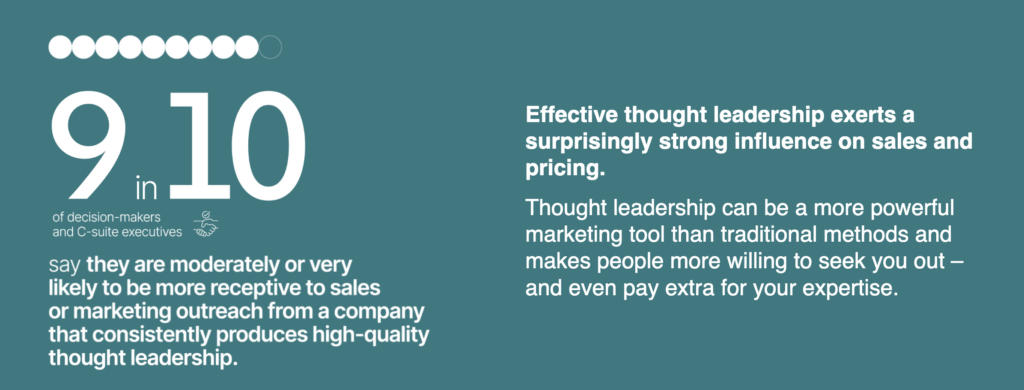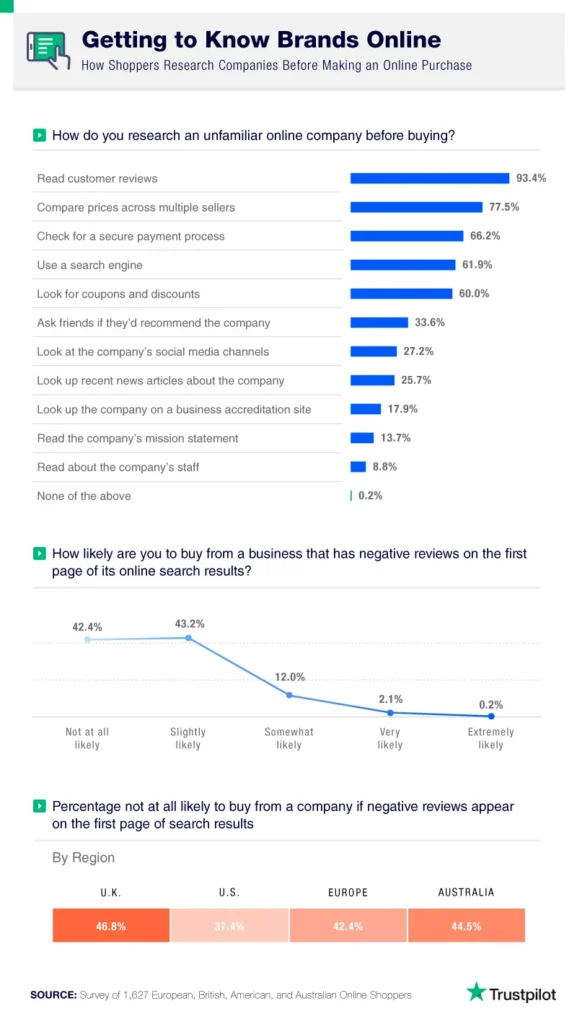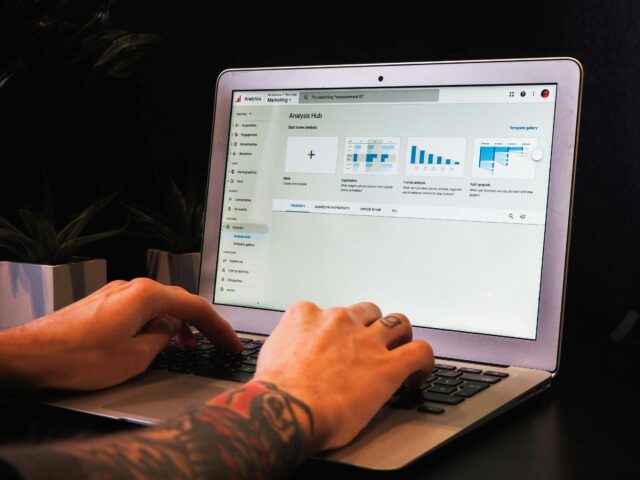E-E-A-T, a significant part of Google’s code of quality, is not just about ranking higher in the SERPs; it factors in far more. It’s about building credibility and driving web consumers to domains where they can take action, whether that be to gather further information about their initial query, for topic exploration, or even to purchase.
For that reason, coupled with the rise of misinformation, building trust and having a strong reputation online is significant and adhering to Google’s E-E-A-T (Experience, Expertise, Authoritativeness, and Trustworthiness) guidelines is increasingly becoming the difference in a brand standing out from its competitors in the market.
But E-E-A-T isn’t just about what you do on your domain, it’s increasingly becoming about what you do externally, through tactics such as Digital PR and link-building.
So, let’s take a look at the role digital PR plays in meeting E-E-A-T guidelines and what tactics brands can deploy.
First off, let’s start with getting an understanding of E-E-A-T
E-E-A-T is a revamped Google framework made up of four signals used to evaluate the quality of search results. These four initials, as touched on earlier, stand for Experience, Expertise, Authoritativeness, and Trustworthiness.
The expanded concept – it was originally a simpler E-A-T – was introduced as part of the search engine’s Search Quality Rater Guidelines, the handbook that Google Quality Raters use to evaluate the quality of search results and measure the success of its algorithm updates.
It is important to say here that E-E-A-T is not a direct ranking factor, but it is a critical part of SEO that every marketing manager should be aware of and be proactively thinking about as part of their organic marketing strategy.
Why? Because Google prioritises displaying web pages that exhibit strong E-E-A-T signals. Beyond influencing search engine rankings, a high E-E-A-T score enhances user trust, which can lead to increased conversions and a better overall user experience on a website.
Let’s explore the four signals in more detail below:
- Experience – Experience is the newest addition to E-E-A-T, highlighting the need for brands to demonstrate experience in whatever topic or subject matter the brand wants to be known for.
- Expertise – Expertise refers to the formal skills, knowledge, or background the author or content creator has in their specific field. This ensures that the information provided is accurate and comes from a credible source. Expertise is particularly crucial in YMYL (Your Money Your Life) topics, where inaccurate information could potentially affect readers’ health, financial stability, or safety.
- Authoritativeness – Authoritativeness is about being recognised as a leading authority in a particular field or topic. This recognition can come from peer acknowledgement, credentials, awards, or any other form of recognition by other experts or authoritative entities in the same domain.
- Trustworthiness – Trustworthiness evaluates the reliability and credibility of the content, the content creator, and the website. It involves assessing the honesty, transparency, and accuracy of the content, as well as the site’s security measures and approach to user privacy and data protection.
If you’re interested in exploring E-E-A-T in far greater detail, you can read more here.
The role Digital PR plays in supercharging E-E-A-T
As summarised by Hallam’s Head of Organic, Carmen Dominguez, ‘Digital PR is the act of creating external credibility, using a brand’s expertise and experience to create trustworthy PR stories that position brands as voices of authority within their sector’. As mentioned at the beginning of this article, adhering to E-E-A-T is not about ranking highly in the SERPs, it is about building credibility and trust at a time when distrust is at its highest point.
Data shows that nearly 6 in 10 consumers say that distrust is their default stance until they see evidence that what they’re seeing is trustworthy. This challenge isn’t isolated to brands but is one government leaders, business leaders, and even journalists and reporters face, too.
A large part of this is down to the rise of misinformation, AI illiteracy, and cancel culture which have become rife. False information can spread virally within seconds due to the social and news landscape. As a result, 56% of searchers said they were worried about identifying the difference between what is real and fake on the internet when it comes to news.
And the reality is that you’re not just trying to get online searchers to trust your brand, you’re trying to get Google to trust you, too.
These are five ways how investing in an always-on Digital PR strategy helps:
Increased brand awareness
Before the turn of 2020, there was a big push from SEO experts on the importance of building brand awareness online.
Google has always given preferential treatment to well-known brands, allowing them to rank highly and capture traffic because of the trust they have garnered – even if they have fewer external backlinks than other brands. This is because there is a higher organic CTR (Click Through Rate) and improved rankings, as Google uses CTR as a signal that the content is preferred by users.
One of the main benefits of Digital PR is its ability to increase brand awareness, get people talking about you, and get your brand associated with your key topics of expertise.
A large chunk of E-E-A-T is based on off-site factors and third-party validation and Digital PR is essential to building those trust signals from external sources.
Establishing the voices behind the brand as experts
A significant part of E-E-A-T is demonstrating the reputation of a brand’s authors or content creators. That’s not just on your domain but away from it, too. Digital PR is the most effective way of achieving the latter.
Effectively, we’re talking about the art of thought leadership here.
Thought leadership refers to content that offers expertise, guidance or a unique point of view on a topic or in a field. They can come in many forms but are typically long-form written content pieces that cover:
- Industry trends and news
- Predictions – what’s next for the sector
- Tips and guidance
- Highlighting issues
- Providing solutions to complex situations
Effective thought leadership has three key attributes: it cites strong research and data, helps buyers understand their business challenges, and offers concrete guidance.
Particularly if you’re managing the public relations activity for a B2B brand, thought leadership is one of the best approaches for driving high-quality and relevant links and press coverage from external sources and publications that write about your niche.
But the impact expands beyond quality links. Data shows that over half of global decision-makers spend an hour or more per week reading thought leadership content. Likewise, 7 in 10 decision-makers say an organisation’s thought leadership content is a more trustworthy basis for accessing its capabilities and competencies.

Press coverage for your people, particularly when it’s using their comments and insights to add value to stories, helps to establish them as subject matter experts, and validate their experience and expertise through third-party sources. Digital PR is at the heart of achieving that.
Driving brand searches
Share of Search is one of the most important online brand metrics and is a leading indicator of market share. It aims to answer an important question: is your brand name being searched for more than your competitors’ names?
And we’re not just talking about a brand on its own here either, but also whether that brand is being searched for alongside its keywords (particularly those relevant to products or services).
Brand searches are something that Digital PR can influence both directly and indirectly and there is often a direct correlation between a huge piece of coverage and a rise both in brand searches and the volume of website traffic.
Associating your brand with authoritative sources
This is a point we have alluded to already, particularly within the thought leadership section, in which we discussed securing quality and relevant links from niche titles.
Thought leadership is one way to go about it, but there is also the bread and butter of PR (sharing your business updates, including hires, product launches, and ESG), Reactive PR, and Campaign PR – more on all of those later.
Whichever tactic you deploy, when your brand is associated with authoritative sources, such as top-tier and niche-specific media publications, achieved through Digital PR, you’re engaging key media titles in talking about your brand, your products, and services.
And in Google’s eyes, this is your brand and products getting a signal of trust from a valued and relevant external source. When these publications are talking about you, it’s hard for readers to ignore.
Whether or not we’re talking specifically about the SEO impact, getting in front of your target audience via trusted publications goes a long way to establishing you as a key player in your industry.
Building online reputation
Backlinks have been discussed a lot up to this point and for good reason, too. Going right back to the basics of links, we must remember that these are essentially votes of trust between one site and another.
It is important to say that unlinked mentions are growing in prominence with each passing Google update. This is coupled with the fact that more and more news publications refuse to link to other domains, either as part of their policy or because they see it as advertising and increasingly are trying to monetise this activity.
So, what we’re seeing is that unlinked mentions – also referred to as brand mentions – are growing in importance. It all contributes to the growth of credibility.
The Goodman Lantern article notes that “A positive online reputation, as reflected through endorsements, citations, and quality backlinks from reputable sources, tells Google that the content is trustworthy and deserves a higher ranking.”
A summary of key Digital PR tactics you can deploy now to aid your E-E-A-T strategy
Data from TrustPilot shows that around 62% of shoppers search for a brand online they are not familiar with before committing to a purchase.
Within that, online reputation was highlighted as the number one way to improve trust with customers
Public relations encompasses a wide net of activity and there are plenty of different avenues that can be pursued to start building those valuable E-E-A-T trust signals and grow a brand’s credibility online.
Some of these we have alluded to already, some we haven’t. However, we have gone into a little more detail on these points to help guide you as to which are the best fit for the Digital PR strategy you’re building.
Here’s how:
- Brand storytelling – share business updates (including new hires, product and service launches, and ESG work) into business and industry niche titles to build links organically in publications that your primary audience is consuming.
- Thought Leadership – establish your company’s industry experts within key titles by sharing topical opinions and data-led articles about the challenges the industry faces, predictions, and solutions.
- Reactive PR – keep abreast of the news cycle and discover opportunities for how your brand or experts can contribute to breaking news stories by providing opinions, hooks, and angles that add to and develop the narrative to build backlinks on a wider scale, particularly with national and international titles that carry huge domain authority scores.
- Campaign PR – by utilising first or third-party data, how can your brand raise awareness for an industry issue in a captivating way? These campaigns centre on topical industry stories that nobody is talking about.
- Industry awards – put your business forward for industry, national and international awards to enhance your reputation as one of your sector’s leading companies.
- Influencer partnerships – develop partnerships with relevant content creators to create visual content across the leading social channels, like TikTok and Instagram, which are increasingly being viewed as search engines. This ties directly into the development and launch of Google Perspectives which is putting more emphasis on the opinions of content creators who are seen as authentic voices online.
Whichever of these tactics are most applicable to you and your brand, ensuring you’re not building backlinks for the sake of it is paramount. Part of your E-E-A-T strategy should be focused on building high-quality expert-led content, securing quality backlinks, and ensuring that those backlinks being secured externally are from relevant sources.
For example, if you’re a cybersecurity brand chasing links from high domains in the interiors and shopping inspiration publications, there is going to be no long-term value in that strategy because you’re not talking to the right audience.
Make the links you’re building mean something and contribute more to your brand by building them in publications and websites your audience is consuming and are likely to take action off the back of. That’s how you build trust online.

Measuring and tracking E-E-A-T
E-E-A-T is not a measurable quality. It’s a code that, if abided by, will lead to a brand becoming organically seen as credible, thus giving you a better opportunity of Google pushing you higher up the SERPs.
And that’s the first point to start with.
Implementing an E-E-A-T strategy alongside Digital PR will naturally lead to an improvement in search rankings, not just for your homepage but the key category, product, and landing pages you may be building links to.
As a result, there is, of course, a direct correlation between ranking higher in the SERPs and an increase in organic search traffic going through to your domain, either to consume your content further or to explore the brand’s offering.
Regardless, given that we operate in a world where 95% of people online are in a passive buying state, ensuring your brand is front of mind is crucial to long-term brand and trust building.
But how else can we measure the impact of your E-E-A-T strategy:
- Time on page – an increase in the amount of time a user is spending on your website is indicative that they’re finding the content they’re consuming useful.
- User journey – what are users doing on your website after they have found you and clicked through to the website? Are they sticking around and exploring other sections or are they departing? An increase in engagement rate is a demonstration that you’re connecting with the right consumers as a result of your on-site and Digital PR strategy.
- Conversion – are you seeing an increase in conversions, whether that is a form fill, sign-up, or purchase? Whatever that CTA may be, once you have captured that user as a result of ranking higher in the SERPs or through a great piece of PR your brand has featured in, this final act is a signal of trust that a consumer trusts you enough to shift from a browsing state to a buying state.
Summary
Digital PR’s role in shaping and bolstering E-E-A-T (Experience, Expertise, Authoritativeness, and Trustworthiness) cannot be overstated. It’s not just a critical tactic for enhancing search engine rankings but also for establishing a trustworthy online presence amidst the proliferation of misinformation.
By investing in digital PR initiatives, individuals and brands can effectively build and maintain their E-E-A-T, thus positioning themselves as reliable sources of information in their respective fields.
Want to get ahead of your competitors?
If you’re ready to scale your Digital PR strategy to help your brand meet Google’s E-E-A-T trust signals, we’d love to talk. Get in touch today.






